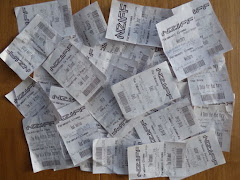The 1970s were a big time for hostage incidents, including hijacks. From the terrorist's point of view if things went well they would achieve their objective relatively quickly and some people would be inconvenienced but no-one would be hurt. Whereas with bombings and shootings it could take multiple attacks over weeks or months with many deaths and injuries to achieve the same result. Of course, there was no guarantee that governments would negotiate but in the 1970s they often did.
In 1979 the Shah of Iran was overthrown and in the aftermath of the revolution, there was an uprising by the Arabs of Khuzestan province demanding autonomy. Khuzestan province which is on the border with Iraq at the end of the Persian Gulf, near Basra and has mixed population including Arabs. The new government in Iran put down the uprising killing about 100 people and imprisoning others.
On 30 April 1980 6 gunmen attacked the Iranian Embassy in London and took the staff, people visiting the embassy and a policeman hostage. Their demand was to get the British government to get 91 Arabs released from Iranian prisons. 6 Days is a docudrama about that six day hostage drama.
6 Days is directed by Kiwi Toa Fraser with Kiwi screenwriter Glenn Standring. Most of the film concentrates on the negotiations between the gunmen and the police (especially negotiator Max Vernon). It also follows the hostage drama from 3 other points of view: the SAS planning, training and executing the rescue, COBRA the high-level Whitehall committee that coordinated the police, SAS and government response and BBC reporter Kate Adie and her cameraman. The film makes it clear that the London Metropolitan Police were strongly against using violence and felt that they could negotiate an end to the situation. The SAS were keen to take over from the police and kill the gunmen. The Iranian government refused to cooperate with the UK government. Margaret Thatcher didn't want to give into the terrorists and wanted the SAS attack to be broadcast on TV.
The film tells the story pretty straight and doesn't pull any surprises. It is most successful in its portrayal of the terrorist leader as he tries to control what is going on in the Embassy and his negotiations with Max Vernon. It's least successful part is trying to humanize the SAS. It focuses on Lance Corporal Rusty Firmin as the SAS plan and train for the attack, but it fails to do more than show him to be one of a bunch of arrogant gung-ho elite soldiers.
The storming of the embassy on the 6th day by the SAS was a dramatic news event that I didn't see on TV (growing up in a TV-less house) but did see photos and read about in the NZ Herald and Time magazine. So it was interesting to find out a bit more about the behinds the scenes events.
In Iran the 444 day hostage crisis at the US Embassy started in 1979 and ended in 1981. Later in 1980, Iraq invaded Iran concentrating on Khuzestan province at the start of the 8 year Iran-Iraq War. The only gunman to survive the siege was released from prison in 2008 and is living in Britain due to fears for his safety if deported to Iran.
Ian's rating 3/5 Anne's rating 3.5/5
Tuesday, August 08, 2017
Subscribe to:
Post Comments (Atom)



No comments:
Post a Comment